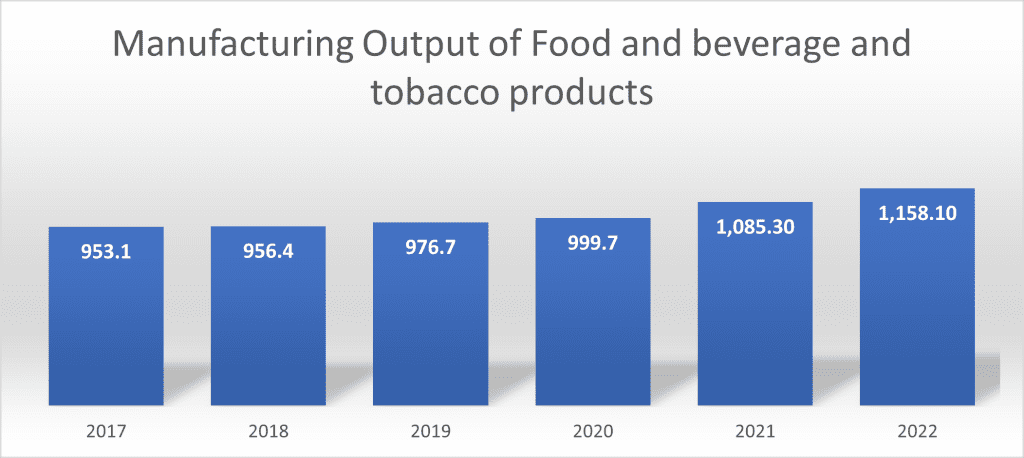While many industries will struggle to launch corporate site location projects in 2024, that should not be the case for the U.S. food and beverage industry. Food and beverage manufacturing plants transform raw food commodities into products for intermediate or final consumption by applying labor, machinery, energy, and scientific knowledge. Some products may serve as inputs for further processing, such as syrup for manufacturing soda.
The U.S. food and beverage manufacturing industry provides 1.2% value added to the US GDP, and the only manufacturing sector higher is chemical manufacturing at 1.9%. The U.S. food and beverage gross economic output is $1.16 trillion in 2022 and this gross output has grown from $950 billion in 2017 illustrating a 22% increase in gross economic output over 5 years. More importantly, the U.S. food and beverage market are projected to grow 3.79% annually over the next 5 years.

Based on data from the U.S. Department of Commerce, Bureau of the Census’s Annual Survey of Manufactures, these plants accounted for 16.8 percent of sales and 15.4 percent of all employees from all U.S. manufacturing plants in 2021. Because intermediate inputs (primarily food commodities) account for a relatively large share of food and beverage manufacturers’ costs, value added in food and beverage manufacturing represents a slightly smaller share (15.0 percent) of value added in all manufacturing.

Meat processing is the largest industry group in food and beverage manufacturing based on sales, value-added, and employment. Meat processing includes livestock and poultry slaughter, processing, and rendering. It is the largest industry group in food and beverage manufacturing, with 26.2 percent of sales in 2021. Other important industry groups by sales include dairy (12.8 percent), other foods (12.4 percent), beverages (11.3 percent), and grain and oilseeds (10.4 percent). Meat processing (22.2 percent) and other food (15.4 percent) are the largest industry groups in the food sector’s total value added.6, 144 dpi), followed by dairy, beverages, and grains as outlined in the U.S.D.A. chart below.

The food and beverage processing industry may well prove one of the few 2024 corporate site location project bright spots driven by increased demand for locally produced food.
Food and beverage processing establishments (plants) employed 1.7 million workers in 2021 (about 15.4 percent of all U.S. manufacturing employment and just over 1.1 percent of all U.S. nonfarm employment). The meat processing industry employed the largest percentage of food and beverage manufacturing workers in 2021 (30.6 percent), followed by bakeries and tortilla producers (14.7 percent).

The food and beverage industry is a major economic powerhouse in the United States.